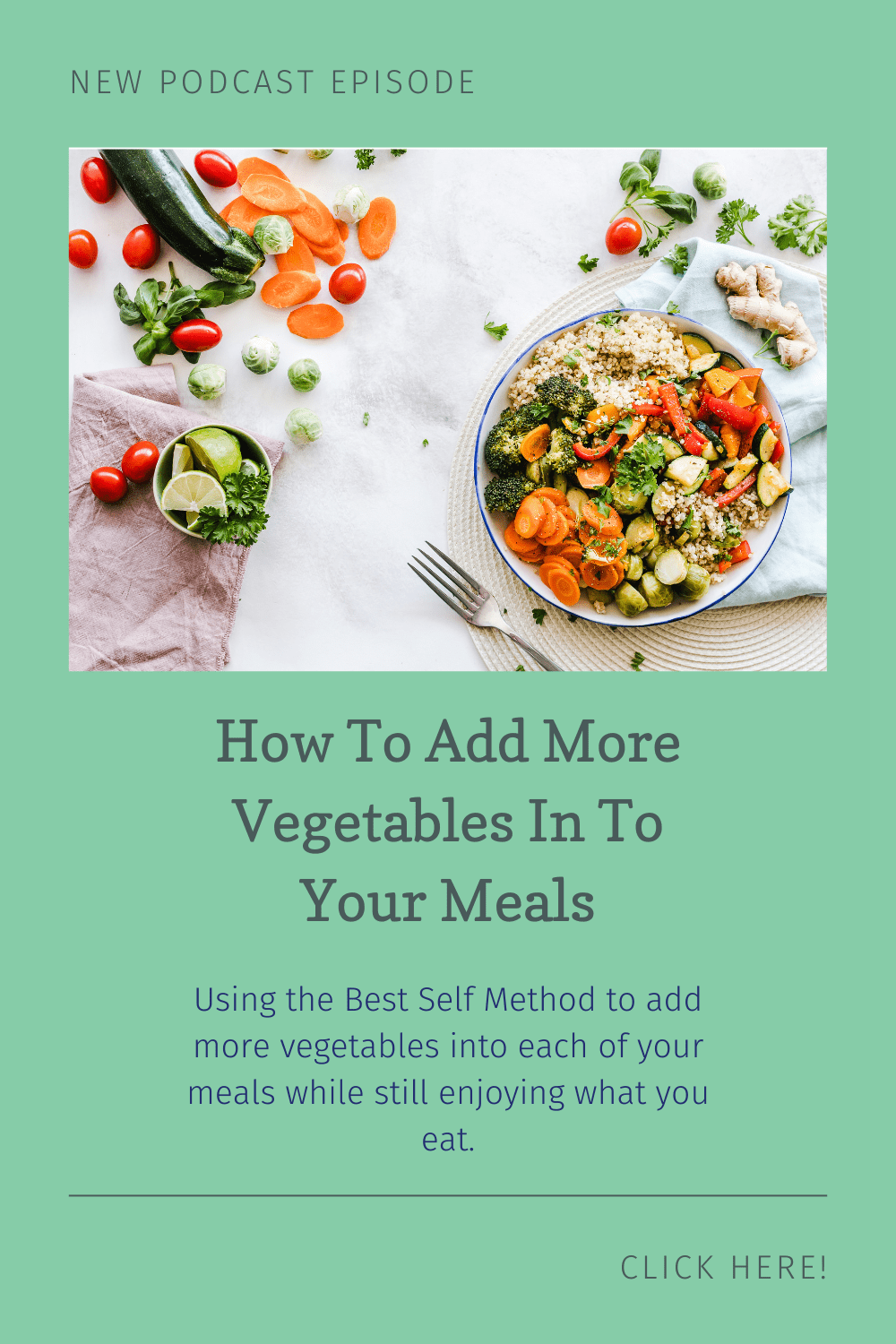August 8, 2023
There are many theories out there that habits take 21 days to solidify; however, according to research on average, habits take 66 days to build. Some take as few as 18 days, and some may take 200+ days.
Why is that?
Training yourself to build new habits isn’t always as simple as “I’m just going to do this every single day”. It would be nice if it was that easy, wouldn’t it?
There are many different ways to add that habit into your day-to-day routine, depending on what that habit is.
For those habits that are not as easy to rotate in (for example: building new eating habits), I encourage my clients to use my Best Self Method.
- Research
- Adjust
- Heal
Today I’m going to take you through each step of the method as it can apply to building new eating habits. Specifically, we will work through the Best Self Method to build the habit of adding vegetables into your meals and the steps that come with it.
Ready to dive in?
Research: Learning More About Your Relationship With Vegetables
The first step is research. Research doesn’t have to be complicated research through science books, etc. It’s simply getting a better idea of what vegetables you like to eat, what recipes you want to try, and how your body reacts to those vegetables. This can be done by simply keeping a notes doc on your phone, writing in a notebook, or using a food journal.
Building new habits will have up and down days. There are going to be days where you are all in and there are going to be days when you just don’t want to do the work to make it a habit. Having the research can help you avoid giving up when things get hard.
When you are working to add vegetables into each meal of the day, and you decide to REALLY go all in on Brussels spouts… and your stomach doesn’t react well… instead of saying “Vegetables made me feel awful, I’m not doing this again,” you know that it was a very specific vegetable and going forward to avoid it until you’ve adjusted your body to that much fiber.
Continuing with the vegetable example, having the research can help you find what vegetables you actually like and how you like to eat them.
Maybe you find that eating spinach in salads isn’t for you, but you don’t mind throwing it into a smoothie, making it a good vegetable to eat with breakfast instead of lunch or dinner.
Adjust: Adding Vegetables Into Your Meals
Then we move onto the adjustment phase. That phase is where you are actually working to implement the habits you are building. This is where the bulk of the work is being done.
Buying the vegetables AND actually eating them.
Taking the recipes you are finding that you want to try AND actually cook them.
Making plans week after week to continue working on that habit.
How does this phase work?
Take your research, and make a plan. First, I highly encourage you to schedule 15 minutes and sit down and write your plan out each week. Over time this will just become a habit… but at first, it will take time and effort to think through what your plan is for the week.
- What recipes are you going to make this week?
- What vegetables do you need to buy at the store?
- Do you need fresh vegetables or frozen vegetables?
After you get back from the grocery store, my biggest eat more vegetable hack is to prepare as much as you can.
- Wash your vegetables.
- Cut up your vegetables.
- Organize them in your fridge.
This takes some of the effort and thinking out of them when you are ready to eat them. They’re washed and ready to go and you just have to add them to what you are cooking.
Then comes the effort of actually eating the vegetables 😉 This is the easy part after you’ve gone through the effort of preparing the vegetables.
Heal: Feeling The Effects of Eating More Vegetables
The last step in the Best Self Method is healing. Which can mean a variety of different things. However, in this instance, it means settling in with that habit.
Over time planning and eating your vegetables for the week becomes a habit, and your body is healing with that new habit.
Healing means seeing the effects of that new habit, such as more energy, weight loss, better health, feeling better, and a clearer mind.
When it comes to the long-term success of adding vegetables into your life, taking the time to work through each of these steps will help you figure out how vegetables fit within your lifestyle, instead of trying to force something in that will set you up to fail.
We are all about long-term habits here, not quick hacks for your health.
ABOUT ME

Hey There, I’m Kristin, a gluten-free nutrition coach helping gluten-free families adjust to their new lifestyle.





